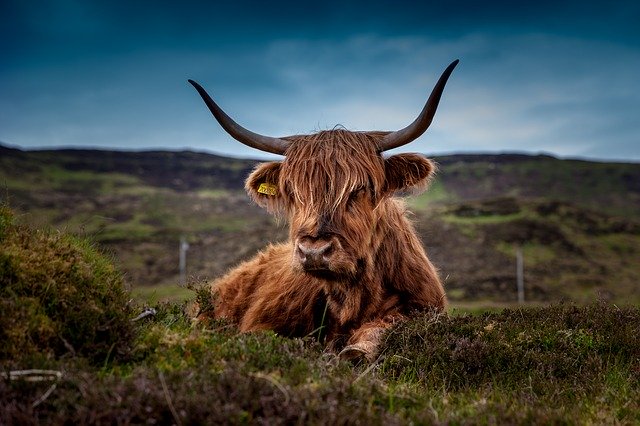Wild Scotland – M/V Greg Mortimer
| Resort: | Wild Scotland - M/V Greg Mortimer |
| Operator: | Explore |
| Destination: | Arctic, Europe, UK & Ireland, United Kingdom |
| Price From: | £6300.00 |
Over ViewExplore Scotland’s wild islands, home to some of the world’s largest seabird colonies, including adorable puffins and noisy Arctic terns. The Scottish isles are a bird watcher’s paradise with species such as fulmars, kittiwakes, guillemots, gannets and shags too. Your ship will get you as close to these sightings as possible, but you can also take to the water in Zodiacs to really get the most out of your wildlife experiences. Seals will frolic close to you and you may encounter whales and dolphins swimming around you. Back on land, discover ancient sites, huge monoliths and remote, picturesque villages in the Hebrides, Shetlands and little-visited tiny isles surrounding the mainland. This is a diverse exploration of rugged and remote Scottish islands, from a unique vantage point. Visit St. Kilda – a World Heritage Site ItineraryDay 1 Set sail from ObanMake your own way to Oban Port, in time for embarkation in the afternoon. Our expedition team will warmly welcome you aboard the MV Greg Mortimer and you will have time to settle into your cabin before the briefings begin. We will set sail along Scotland’s northwest coast in the evening. Day 2 Isle of Skye, Barra, Rum and IonaFrom golden beaches to jagged peaks, bleak moors and heather clad hills; from abandoned settlements to picturesque villages, our days in the Hebrides archipelago will be packed with variety. We may explore remote lochs beneath some of Britain’s most untamed mountains and wander between unusual rock formations. We may watch for whales, dolphins, otters, seals, and the increasingly rare basking sharks. Possibly we will land at an island reserve that is home to red deer and white-tailed sea eagles. Day 3 Isle of Skye, Barra, Rum and IonaEarly the next morning we will aim for the tiny island of Iona. Barely 5 kilometres / 3 miles long, Iona is renowned as the birthplace of Christianity in Britain. It is also a burial ground of early Scottish Kings. The Irish monk, St Columba and twelve disciples, landed here and founded a monastery in 563 AD. From this base, St Columba set about converting Scotland and much of Northern England to Christianity. Day 4 Saint Kilda and surrounding islandsFrom the Inner Hebrides we make our way to the Outer Hebrides – also known as the Western Isles – that stretch for 20o kilometres and look out on their western side to the Atlantic Ocean. Our first stop is at the Isle of Lewis, the largest and northern-most island in the Outer Hebrides. We plan to make a stop at Callanais, where archaeology buffs will be keen to see the fascinating group of Standing Stones, dating from around 3,000 BC. Nearby we may visit Bostadh House, a remarkable reconstruction of an Iron Age dwelling tucked away just above a beautiful white beach. Day 5 Saint Kilda and surrounding islandsWeather permitting we plan to land at the isolated archipelago and World Heritage site of St Kilda, where derelict crofts bear testament to the fortitude of islanders who once tended the unique Soay sheep and harvested seabirds for food and to pay their rent in the form of wool, meat and feathers. The isles hold Europe’s most important seabird colony and is home to Britain’s highest sea stacks or rock columns. Day 6 Saint Kilda and surrounding islandsIsland hopping northeast, we aim to visit tiny specks of land that bear the brunt of violent Atlantic storms and rarely see visitors. Home to breeding seals and some of Europe’s largest seabird colonies, Sula Sgeir, North Rona and Flannan boast spectacular cliffs, fantastic rock stacks, hidden beaches and luxuriant heaths where sheep once grazed. Day 7 Shetland IslandsBritain’s most northerly islands lie almost 160 kilometres north of the Scottish mainland, at a similar latitude to the southern tip of Greenland, or Bergen in Norway. Kept relatively warm by the Gulf Stream, Shetland’s 100 islands experience almost 24 hours of daylight in summer. They abound with nature reserves and archaeological sites, and offer a taste of traditional island life. Day 8 Shetland IslandsWe plan to visit some of Shetland’s best preserved and most complex archaeological sites of brochs, or fortified Iron Age towers, as well as some of the world’s largest colonies of sea birds. Day 9 Orkney IslandsMid way between Orkney and Shetland, Fair Isle houses a major European ornithological research station, and is also famous for knitwear and historic shipwrecks. About 4.8 kilometres by 3.2 kilometres, it is surrounded by impressive cliffs. The 70 or so islanders mostly live in traditional crofts on the more fertile low-lying southern part of the island. Day 10 Orkney IslandsAmong Orkney’s archipelago of 70 windswept islands, lying 9.6 kilometres north of the Scottish mainland, a rich tapestry of archaeology, history and wildlife awaits. You follow the passage of time – from 5000 year old World Heritage neolithic sites, past relics from wandering Vikings and reminders of World War II occupation, to present day crofting communities. Imposing sea cliffs teem with seabirds and cliff top paths and bleak moors beckon keen hikers. Day 11 AberdeenUpon arrival in Aberdeen, you will disembark the ship for onward travel. |







